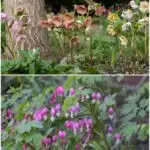
Suppose you’re well on your way to creating a garden oasis with blooming flowers, pollinator-friendly groundcover, and hardy vegetables. In that case, you may have a sturdy Oak or swaying Maple (Is it too idyllic to include a tire swing?) standing amongst the foliage.
Under these expansive trees is welcomed shade during long summer days and cover from a sudden rain storm; however, there is usually little growing.
It’s not a wonder little grows under a tree with sporadic sunlight and an established root system competing for water, but, we’ve found 13 plants that thrive in these conditions.
Which plants grow in my gardening zone?
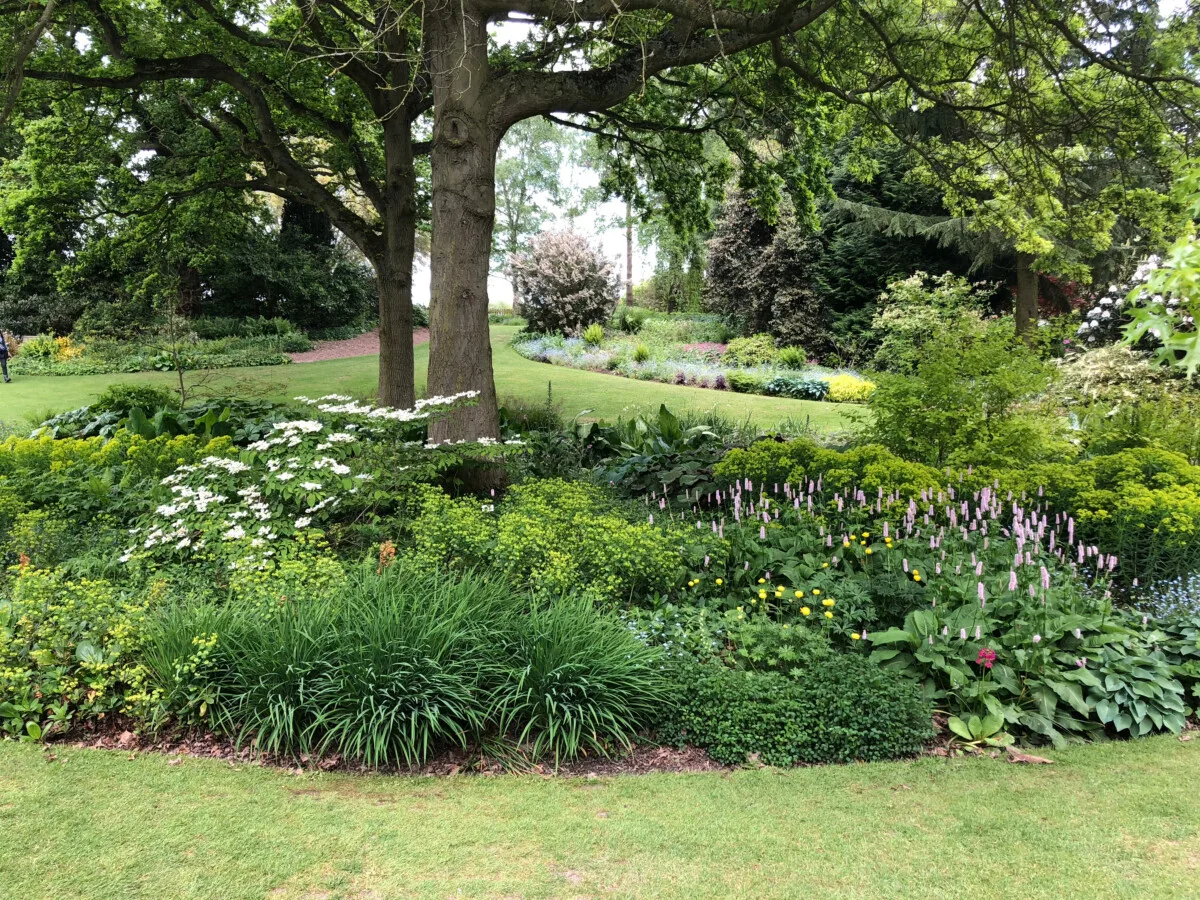
This list, while extensive and should give you a bloom to plant under any tree, you should consider your zoning before shoveling dirt.
Why is plant hardiness and planting requirements important?
As much as I’d love to have popping pink hibiscus leaning against a Pine, writing from the mountains of British Columbia, I’ll sadly admit, in zone 5b, that’s impossible.
In Canada, our gardening zones are based on this Plant Hardiness site. In the US, it’s based on this Plant Hardiness Zone Map.
Where you reside on the map is important for the greens you grow for many reasons:
- Seed planting – certain seeds need the perfect soil temperature to germinate; therefore even the most well-prepped hole won’t have the required heat to germinate if your zone is too chilly.
- Time to bloom/establish – If your seed finally germinates in the middle of summer, when the weather is hot, but your area experiences frost in early Fall, the plant will not have time to reach it’s full potential and bloom, or if a perennial, be able to establish for the following year.
- Climate – while most of these plants are shade-loving, some prefer wet, damp conditions, while others prefer a hot and dry environment.
Be sure to watch for the zoning requirements of these blooming beauties below!
Scroll on for these easy-going growers and get to the root of the plan at the end on how to plant them.
Hosta
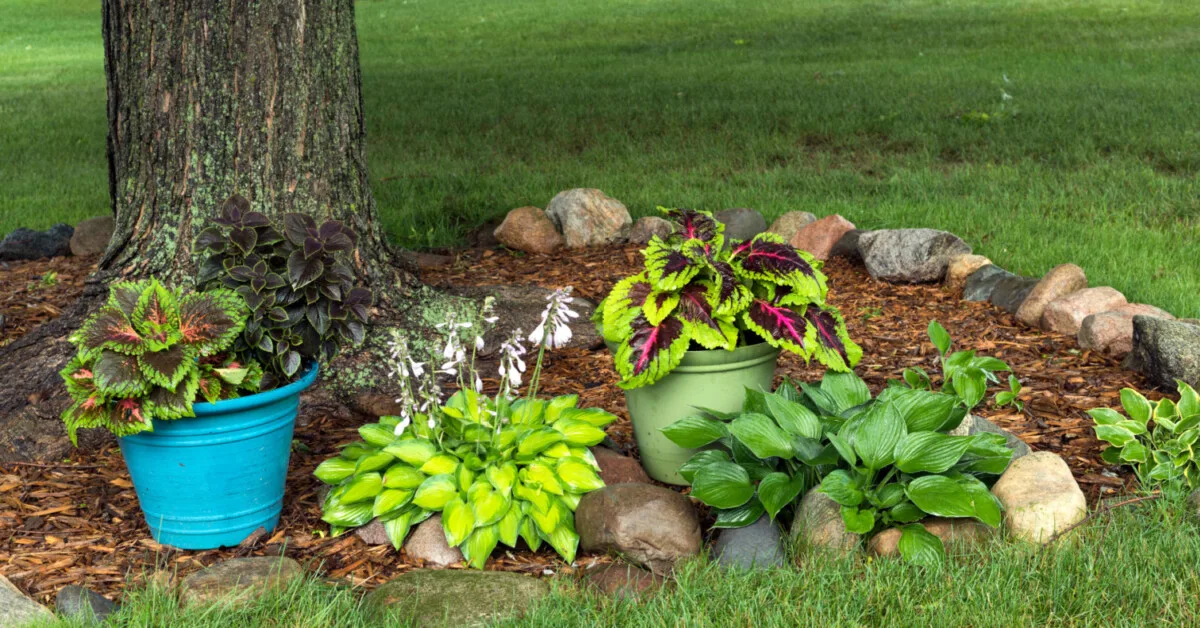
Sun exposure: Dappled light to full shade
Hardiness Zone: 3-9
Plant Type: Perennial
Hostas are likely one of the most recommended plants for under a tree because they are happy under almost every type. A hosta will happily thrive if you have a spruce, maple, cedar, or fruit tree.
Keep in mind, while establishing, a hosta will need frequent supplemental watering and will benefit from watering weekly going forward.
Pro tip: the darker-leafed varieties, blue, green, and variegated, will do better in shadier spots than the gold or lighter varieties, as they require sunlight to achieve their bright colors.
Lesser Periwinkle
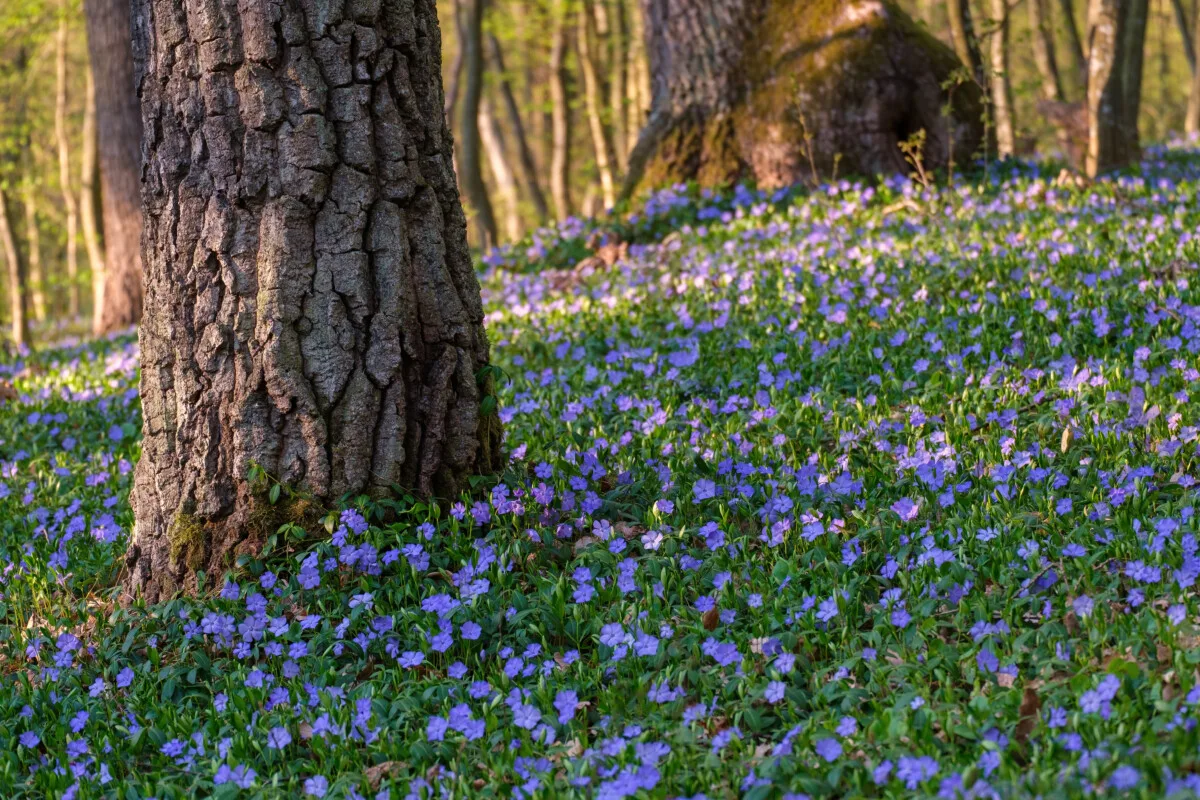
Sun exposure: Partial shade to full sun
Hardiness Zone: 4-9
Plant Type: Perennial (in warmer regions)
Lesser Periwinkle is as pretty and delicate as the name sounds, with dark green leaves carpeting the ground under purple-blue blooms.
This eye-catching crawler is perfect as a ground cover in a commonly bare area under a tree as it’s drought tolerant and doesn’t require much sun.
Allow it to cascade down a rock wall under your mature tree, and it’ll choke out any unwelcome weeds trying to establish themselves around the trunk.
Be aware: Lesser Periwinkle can be toxic to animals and humans.
Hellebore
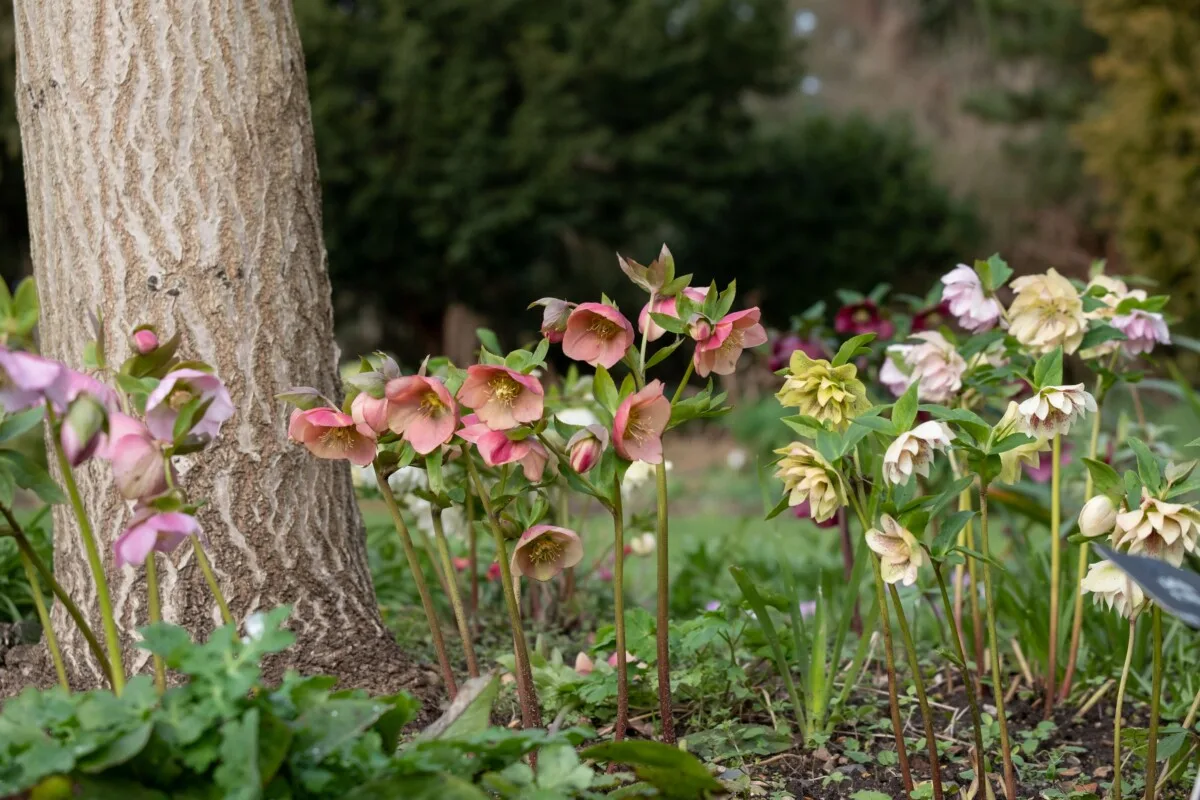
Sun exposure: Full sun to full shade, but do best in partial shade.
Hardiness Zone: 3-9
Plant Type: Perennial
If you’re in a snowy locale, one of the first hints of Spring is over-wintering shrubs poking out from beneath a snowy blanket. Hellebore will not disappoint with it’s early season show of green leaves and first-to-bloom flowers.
Choose from various colors, including ‘Anna’s Red’, ‘Citron’ or ‘Angel Glow’ to name a few.
These shrubs do best under shade in the Summer but prefer sunshine in the Winter months, so planting under a deciduous tree that drops it’s leaves would be best.
Ferns
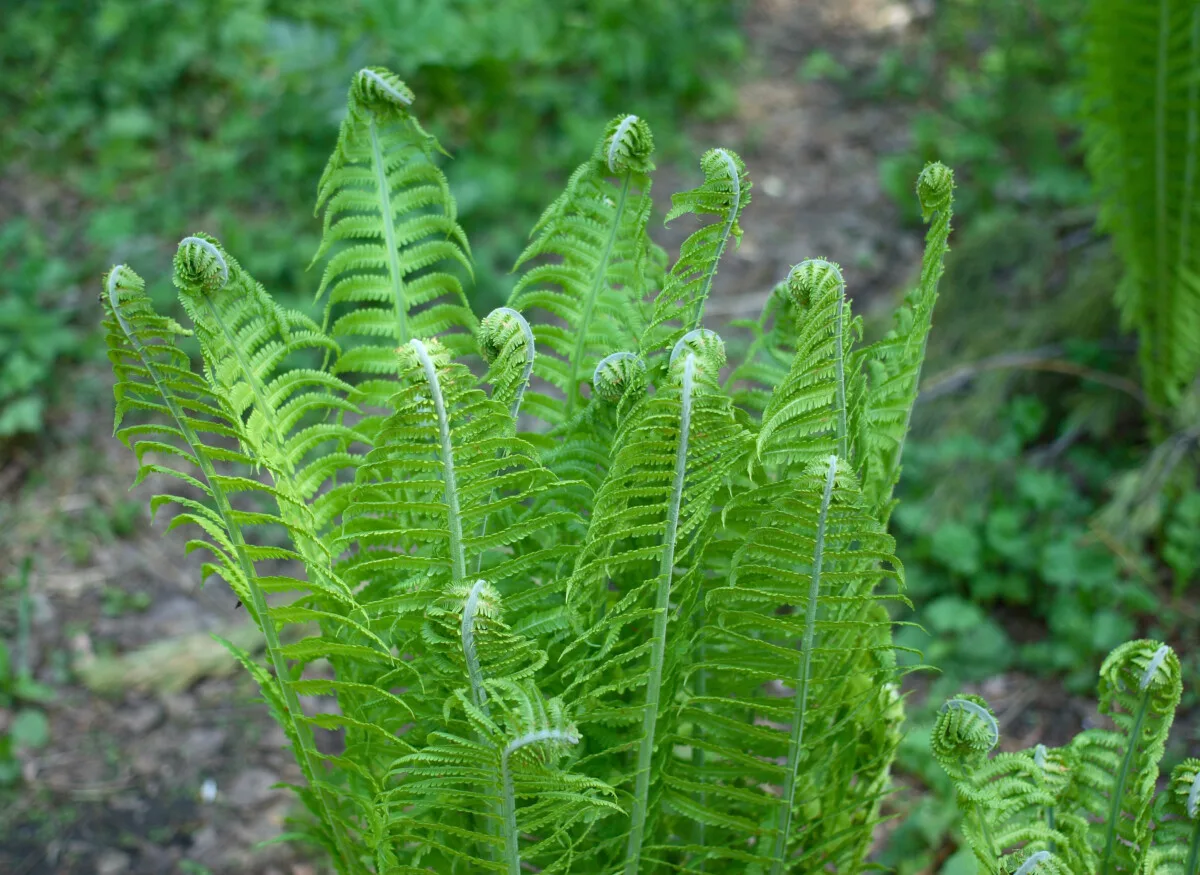
Sun exposure: Filtered light to full shade.
Hardiness Zone: Most are 4-8, though some can be down to Zone 2 or up to Zone 10.
Plant Type: Perennial
Do deep green ferns, unfurling beneath large canopies of woodlands fill you with whimsy? Why not bring that into your garden or backyard? When in doubt, turn to Mother Nature for her viewpoint on what to plant where.
Ferns, like the Ostrich fern, Eastern hayscented fern, or the Sword fern, can fill in an otherwise empty spot amongst the trees.
Growing up to 4ft tall, a fern can add a splash of extravagant color under a tree, with easy clean up in the late Fall, or early Spring. Lift away the dead ferns and watch as new growth starts to unfurl.
Before their full display, pluck a few ostrich ferns when it’s a curled edible shoot for an earthy, warm side to your dinner.
Lily of the Valley
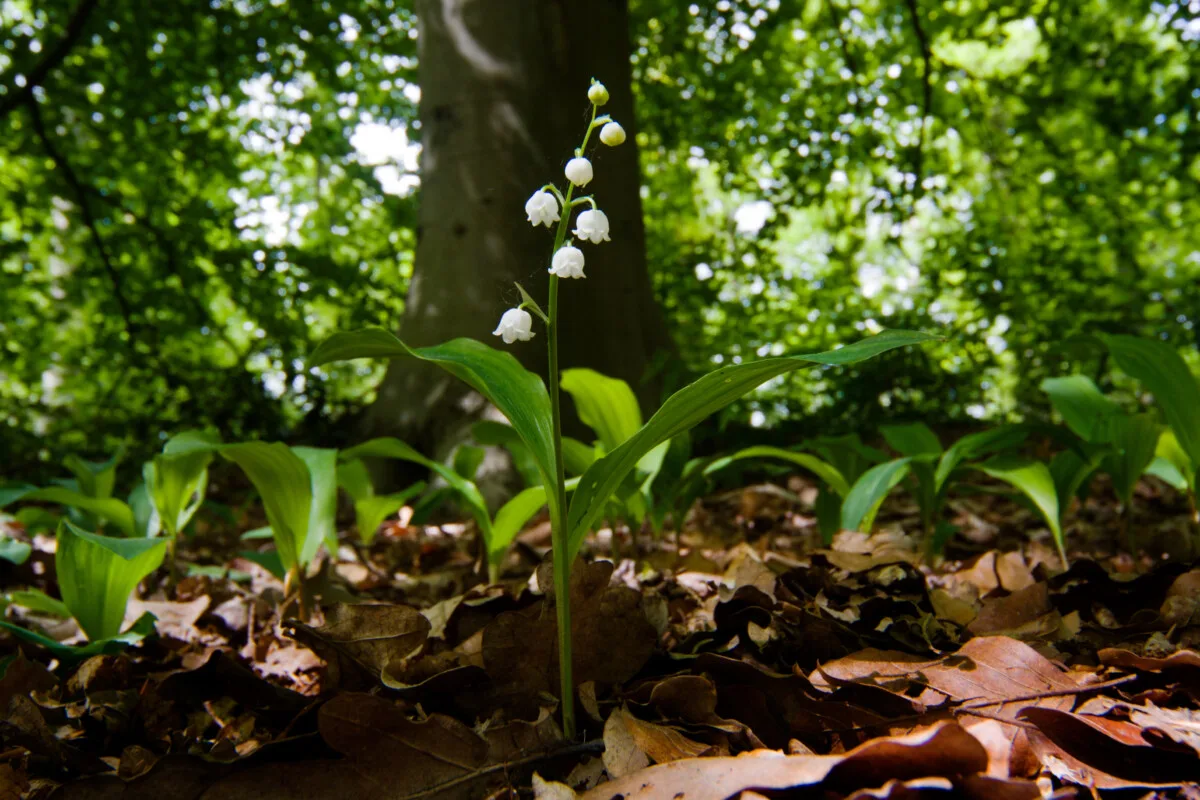
Sun exposure: Partial shade to full shade.
Hardiness Zone: 2-7
Plant Type: Perennial
Lily of the Valley, with it’s sharp green leaves and delicate white bell flowers, make for a beautiful pop of white against a mature tree.
There’s a clue to this plant’s growing habits in the name. ‘Of the valley’, delivers views of wide-ranging white bell flowers covering a valley bottom, as it can be considered invasive or an aggressive grower. Some gardeners who prefer the pop of green and white to be contained amongst an under-tree bed tend to keep Lily of the Valley growing in a pot.
Lily of the Valley prefers moist environments, so heavily shaded cover will stop it from drying out. However, supplemental watering should carry it through a hot summer with slightly more exposure.
Bleeding Heart
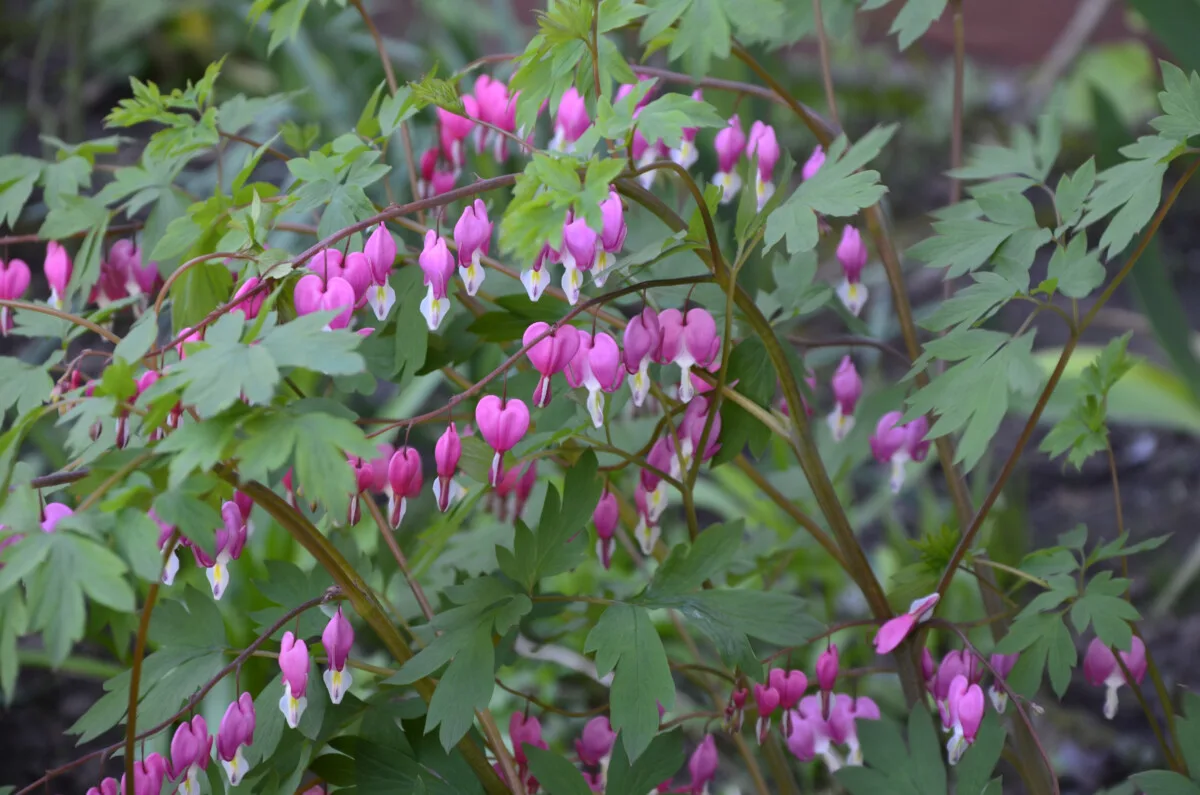
Sun exposure: Light shade
Hardiness Zone: 3-9
Plant Type: Perennial
Be still my bleeding heart, this bushy green leafed plant, a staple in old-timey, grandma-tended gardens, has soft pink, white, or deep pink flowers that resemble a heart. Positioned along a stem, these ‘hearts’ run in a string line and add a pop of early-season color to your bed.
Our grandma’s were onto something; this plant is so easy to grow. Pop it in place and let it wow you year after year.
It prefers damp, cool growing places but doesn’t tolerate soggy, so under a shade tree with decent drainage is best. A Bleeding heart can grow up to 3ft in width, so take care to plant with room to grow if it’s joining other under-tree plants.
Beware: Bleeding heart can be toxic to humans, dogs, and cats if ingested.
Hens and Chicks
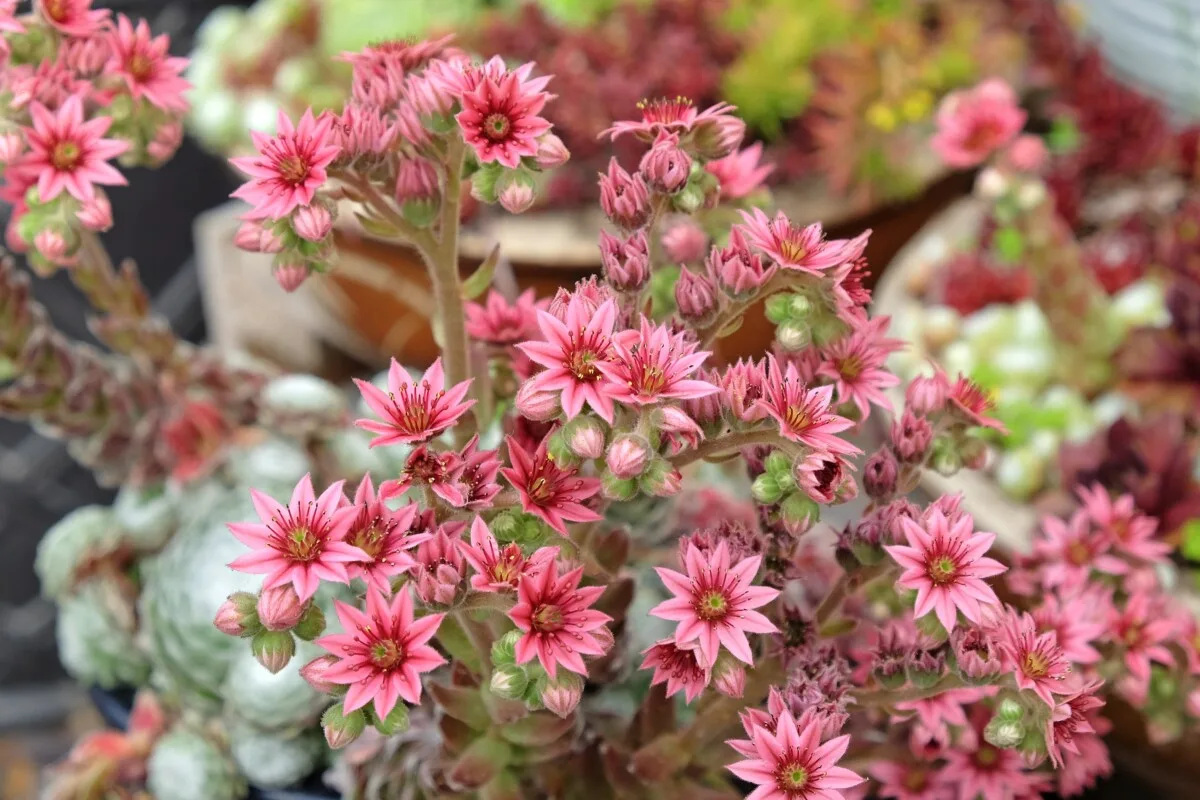
Sun exposure: Partial shade.
Hardiness Zone: 3-8
Plant Type: Perennial
For every rock wall, there should be a cluster of Hens and chicks peeking out of each crevice. Hens and chicks make for a perfect pop of color, and while they do spread, you don’t have to worry about a 3ft tangled jungle taking over.
Consider popping these traveling beauties in a space that does soak in some sun but remains relatively shaded by an expansive canopy above.
Due to their low-growing nature, be sure to plant these where larger brush-type plants won’t cover them.
Japanese Spurge
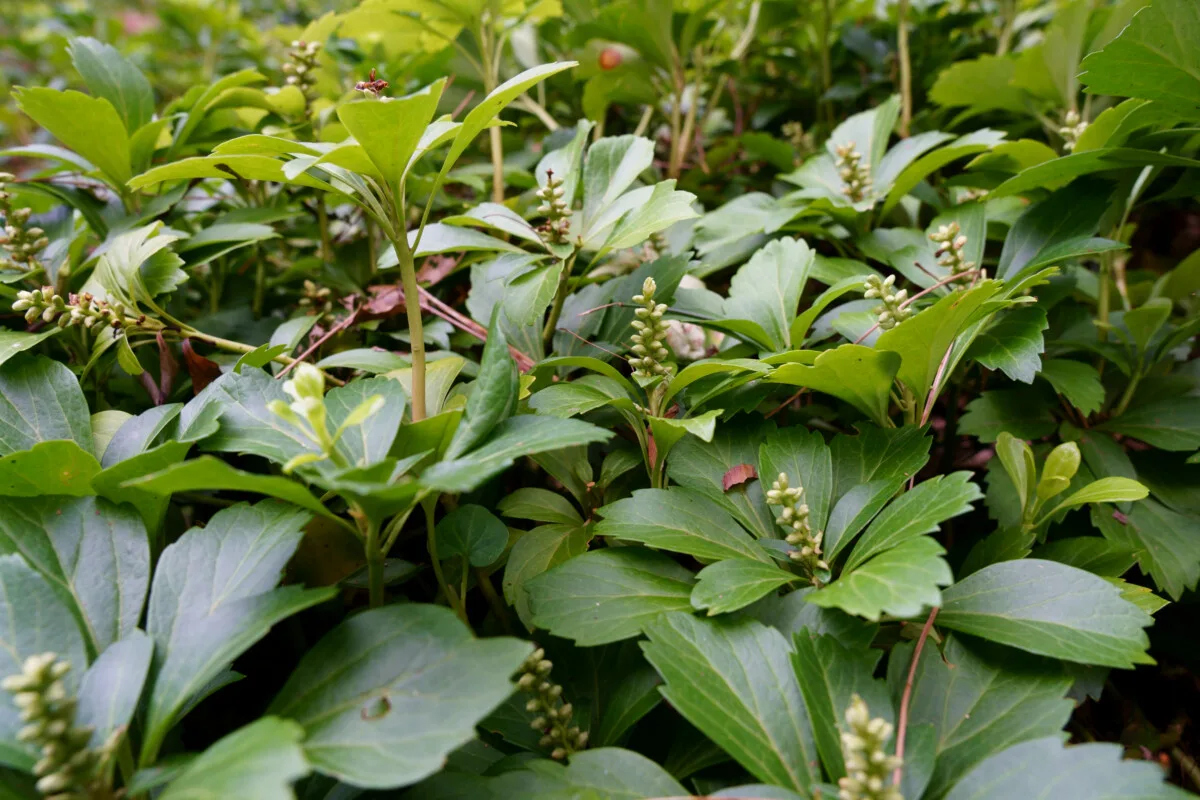
Sun Exposure: Partial shade to full shade.
Hardiness Zone: 5-8
Plant Type: Creeping perennial
Pachysandra (or Japanese Spurge) is a ground cover plant with dark green leaves, with some varieties mimicking the look of basil. Japanese spurge will flower in early spring, revealing a small white spike-looking flower.
With Japanese spurge being nontoxic to household pets, and humans (but mildly toxic to plant-eating animals), it’s the perfect option for a hardy ground cover that can handle mild foot traffic while providing ample coverage.
As with any creeping ground cover, consider the fact it could spread and should be placed in a spot where it is allowed to roam.
Angelica
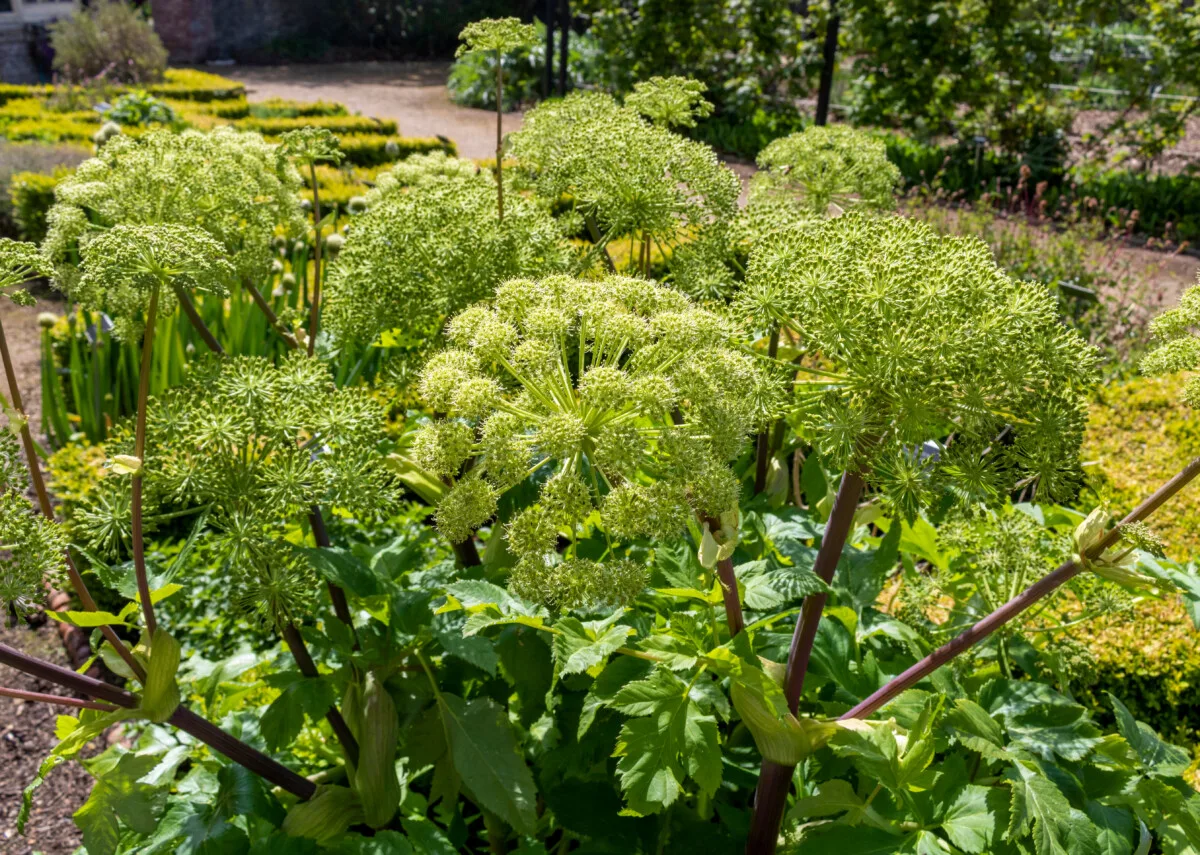
Sun Exposure: Full sun to partial shade.
Hardiness Zone: 4-9
Plant Type: Perennial
If you’re like me, I love a plant that does double (if not triple) duty in the garden. Angelica is an eye-catching plant that covers an area while providing many medicinal benefits, and edible parts.
Angelica looks slightly similar to the toxic Giant Hogweed but without any of the trouble. Angelica has pointed light green leaves that form a bush, then long, hardy stems shoot from the bush before flowering, creating an orb-like flower.
Known as the “herb of the sun”, this towering plant can grow up to 8ft tall so it would be best placed around the base of a tree with high-cut branches.
Wild Bergamot
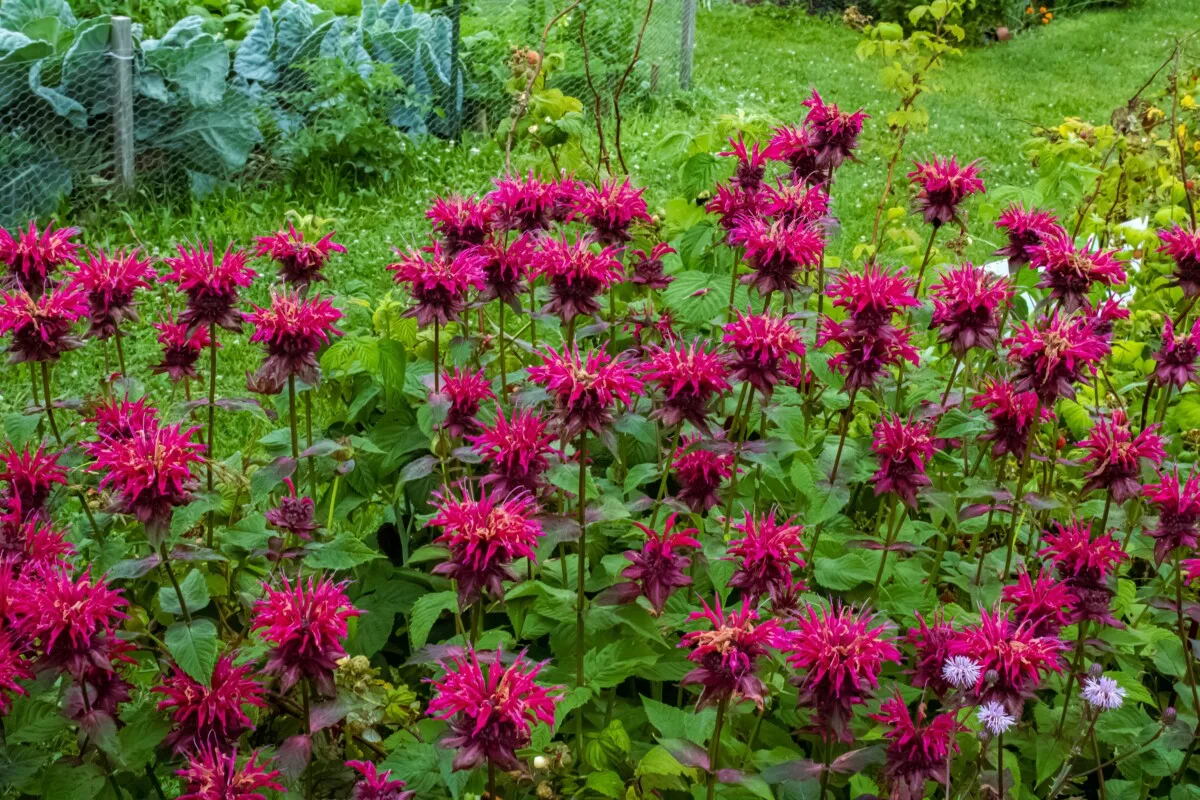
Sun Exposure: Full sun to partial shade.
Hardiness Zone: 3-9
Plant Type: Perennial
Wild Bergamot, also sometimes called “Bee Balm” is the perfect addition to a wildflower-type patch in front of a mature tree.
I can testify to Wild Bergamot’s enjoyment of shadier, damp conditions, as I accidentally placed a pumpkin start beside a seeded row instead of the zucchini I had intended. When the pumpkin had taken over the bed in long-reaching tendrils and pumpkins the size of a prize-winning snowman bottom, the Wild Bergamot sprouted and reached through the pumpkin vines to produce lavender-colored pops of frilly, tubular blooms. The pollinators in my garden were ever so thankful for the later season bloom!
Not only is Wild Bergamot a pollinator-friendly addition to your yard, but it is also used for many medicinal purposes as it’s high in antioxidants, antibacterial, antiseptic, antiviral, and astringent.
Blueberries
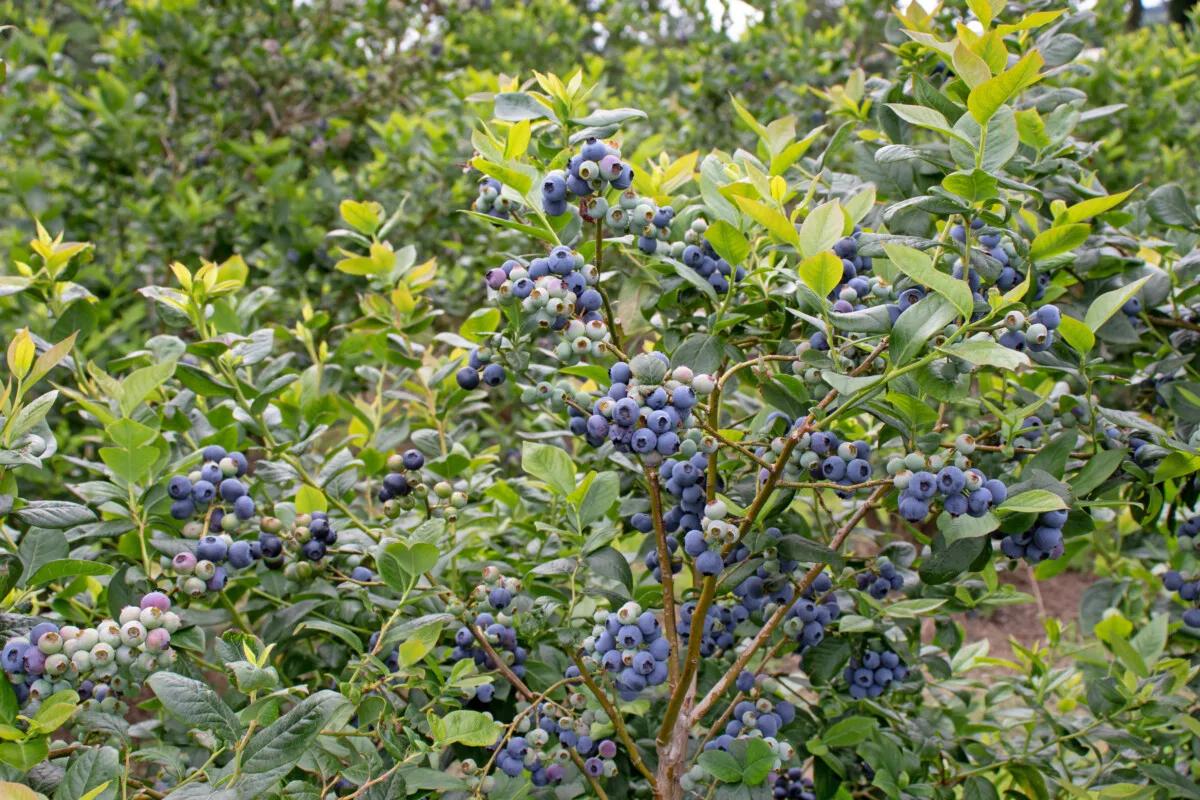
Sun Exposure: Full sun to partial shade.
Hardiness Zone: 3-7
Plant Type: Perennial
Few berry bushes enjoy the partial shade of a tree, and most can become so unruly that placing them under a tree can cause them to choke out the roots and overtake the tree.
While it’s been debunked that pine needles turn the soil beneath them slightly more acidic, I still often use pine needles (mixed with straw from a barn clean-out) under our berries to keep the weeds at bay and retain moisture.
Blueberries require some sun, so a canopy of filtered light like a Dogwood is an ideal companion.
Bear in mind, that there are many different varieties of blueberry, and some are more cold-tolerant than others!
Strawberries
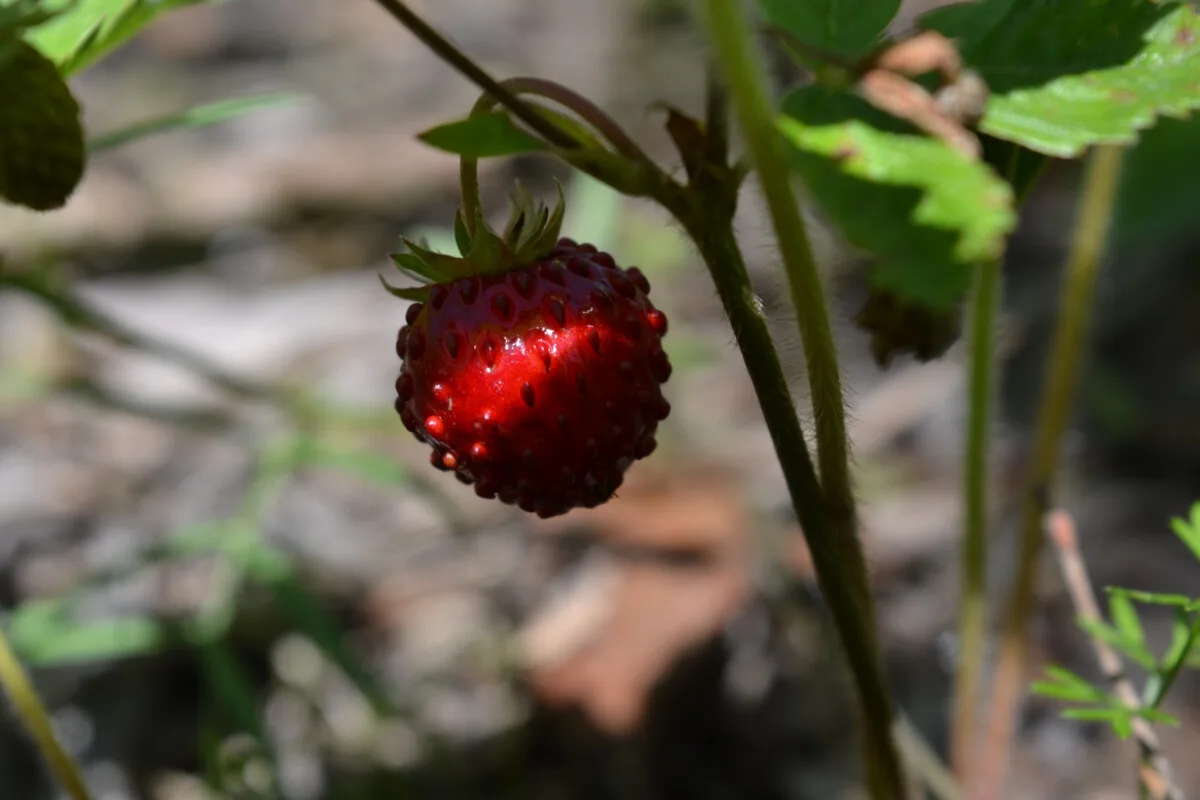
Sun Exposure: Full sun to partial shade.
Hardiness Zone: Most are 4-7, though there are a few for zone 3.
Plant Type: Perennial
Plant this ground cover with a perk, delicious strawberries. The serrated green leaves with white flowers (and eventually red strawberries) make for an eye-pleasing addition under a tree.
When strawberries are not exposed to full sun, they often grow smaller berries that are slightly less sweet. They will still need some light to produce, so filtered, or morning/afternoon sun would be best. These do well under trees with high-cut branches.
Consider gently cleaning up the needles or leaves that fall, though a minor deposit makes for excellent mulch.
Coral Bells
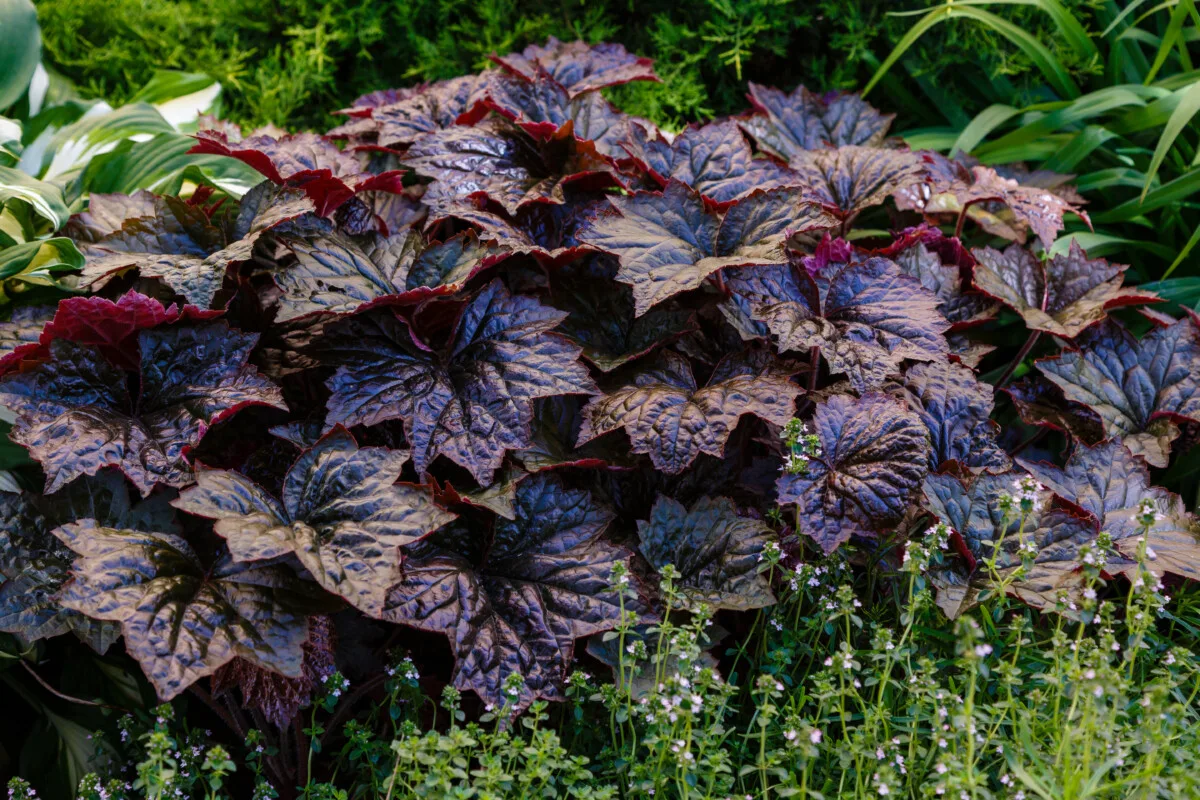
Sun Exposure: Part shade.
Hardiness Zone: 4-9
Plant Type: Perennial
Coral Bells (Heuchera) fancy up even the most mundane garden display, with its deep burgundy, green, yellow, peach, or copper leaves and small white bell-shaped flowers.
These shade-loving plants form a bush of approximately 2-3ft and enjoy some sunlight during the days.
In the pristine garden of my Nana, this plant grows among her Japanese Maple, Dogwood, and low-growing bushes for a pop of color.
How to plant under a tree
These thirteen choices will flourish under shade in your yard; however, planting them correctly from the beginning will make or break your long-term success with the plant.
- Disturb the established tree roots as little as possible, by planting small starts between the roots using a small trowel.
- Be sure to check the planting or light requirements of your specific variety.
- Keep the understory tidy during the fall months when leaves or needles are dropping.
- Supplement water while plants are becoming established or during particularly dry conditions.
- If choosing a tree for your ornamental garden, select those that typically shoot deep roots and allow some filtered light.
If you take a stroll through any naturally occurring spot in nature, (except the desert), you will typically find a well-established rhythm of growing that takes place.
The understory consists of multi-variety plants, berries, and bushes, reaching toward saplings, established mature trees, and eventual deadfall.
Recreating this beautiful dance in our homes and gardens creates space for an eye-catching display, a pollinator-friendly oasis full of edible or medicinal plants, a potential habitat for insects and small critters, and a peaceful place for a morning cup of joe.

